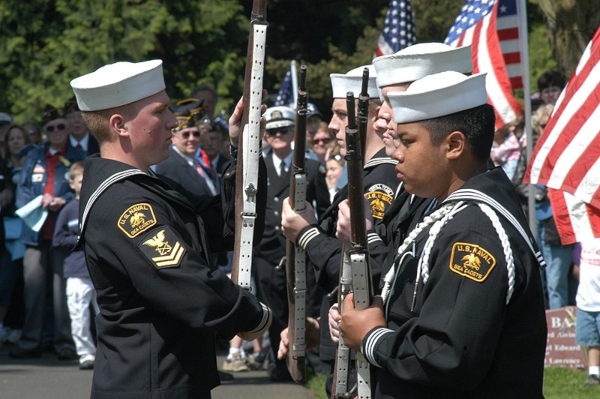The United States Naval Sea Cadet Corps (USNSCC) is a program sponsored by the Navy to teach the youth about sea-related military services and operations.
The Navy Sea Cadet Program also teaches young cadets about community service, discipline and teamwork, and citizenship.
USNSCC is divided into two different programs based on age.
Learn more about the Navy Sea Cadet Program and how you can join this rewarding organization.
Navy Sea Cadet Program – Fast Facts
The Navy Sea Cadet Program dates back more than 60 years in the United States.
Here are some fun facts about the organization:
- When was it founded? 1958.
- Motto: “Chart your course”
- Colors: Blue and Gold
- Where is the USNSCC headquarters? Arlington, Virginia.
- How many members? Over 12,000 members (9,130 cadets and 2,870 officers)
- Where does training take place? Navy Recruit Training Command, naval bases, and other regional recruit training sites.
Related Article – List Of Navy Bases In The US
Jump To A Section
What is the Navy Sea Cadet program?
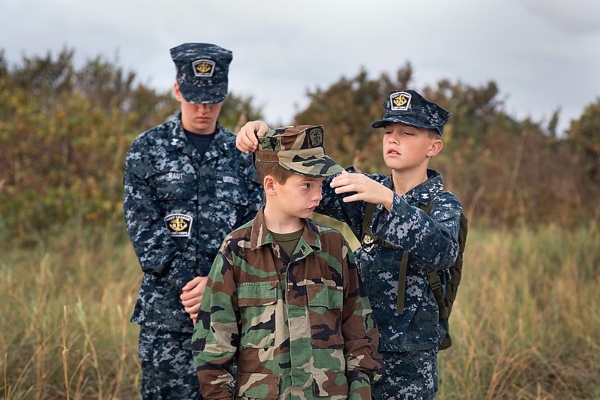
The United States Navy Sea Cadet Corps (USNSCC) is a youth leadership development organization, according to the U.S. Navy.
The USNSCC, or NSCC for short, promotes interest and skill in naval disciplines.
It also focuses on instilling strong moral character and life skills.
Young cadets journey through the program in order to develop personal traits, leadership, and skills in technical programs that are modeled after the U.S. Navy professional development system.
Related Article – Pros and Cons Of Joining The Navy
The Navy Sea Cadet Program is divided into two different programs:
- Navy League Cadet Corps (NLCC): The program is reserved for the ages 10-13.
- Naval Sea Cadet Corps (NSCC): The program is reserved for the ages 13-18.
According to the USNSCC, cadets progress through one of the two organizations to achieve a standardized training program designed:
- Develop an interest and ability in seamanship and seagoing skills.
- Build virtues of good citizenship and strong moral principles in each cadet.
- Demonstrate the value of an alcohol-free, drug-free, and gang-free lifestyle.
- Introduce cadets to the prestige of public service and a variety of career paths through hands-on training.
Navy League Cadet Corps (NLCC)
The junior cadet program provides an introduction to naval life through instruction in basic seamanship and leadership.
Consequently, junior cadets receive the opportunity to participate in monthly drill sessions during breaks in school.
A one-week orientation class and specially-designed annual training sessions are also offered through the NLCC.
The objective of the Navy League Cadet Corps is to prepare its cadets for success upon joining the Naval Sea Cadet Corps (NSCC).
Related Article – Navy Tattoo Policy: What IS And What ISN’T Allowed
Naval Sea Cadet Corps (NSCC)
The senior cadet program, the Naval Sea Cadet Corps, is open to youth between the ages of 13 and 18.
The Naval Sea Cadet Corps expose cadets much more to the full rigors of a military training program compared to the junior offering.
Consequently, young cadets are required to attend a two-week recruit training camp.
Furthermore, cadets must participate in a variety of advanced training sessions in order to acquire more military-related skills.
The training sessions are designed to expose cadets to seamanship and seagoing topics.
There is also a focus on developing an understanding and appreciation for the naval history of the United States, including customs and traditions.
Where is the Sea Cadet program conducted?
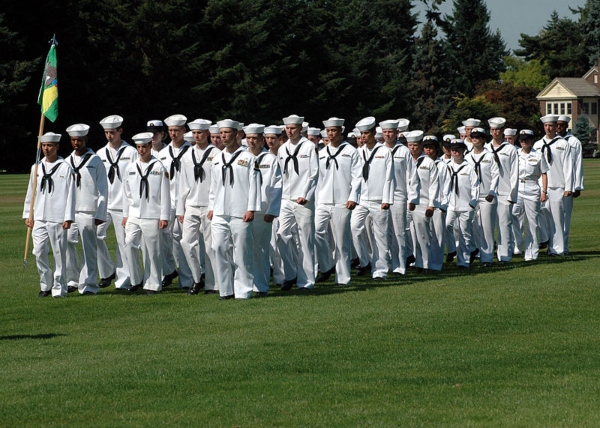
After you join the Navy League Cadet Corps (NLCC) you will meet with your local unit to establish a training plan.
Junior cadets have the opportunity to experience their first junior league training during summer vacation or winter break, depending on whichever one is closer.
During a break from school, junior cadets may attend a league orientation.
After completion of orientation, you have the option of attending more recruit training.
- League Cadets: Voluntarily can attend a one-week, away-from-home Navy League Orientation. Completing the orientation gives junior cadets opportunities to participate in other advanced training sessions.
- Sea Cadets: All Sea Cadets must attend a mandatory two-week recruit training session. The training takes place at the Navy Recruit Training Command, naval bases, or regional recruit training sites.
The training is modeled after Navy recruit training with a focus on the core values of the military branch (honor, courage, and commitment).
Advanced USNSCC Training
The real fun begins after completing orientation as League Cadets and Sea Cadets are open to a whole range of possibilities.
The location of advanced training will depend on which program you wish to participate in.
Some of the most popular advanced training opportunities include:
- U.S. Naval Academy Summer Seminar
- Petty Officer Leadership Academy
- Basic or Advanced Underwater Scuba
- U.S. Coast Guard Academy Introduction Mission (AIM)
It is also possible to arrange for local training provided by the United States Coast Guard.
The Coast Guard hosts local sessions like Seabee and SEAL challenges, ship visits, field operations, and Honor Guard competitions.
Related Article: 17 Famous Navy SEALs (and 3 Controversial Ones)
Science, Technology, Engineering, and Math (STEM) Training
STEM is a major point of emphasis in public education which is why the USNSCC collaborated with the Office of Naval Research to create the SeaPerch Program.
The SeaPerch Program is an underwater robotics program that presents young cadets with the resources needed to build their own underwater remotely operated vehicle (ROV).
Furthermore, there are other STEM-based programs offered through the Navy Sea Cadet Program:
- CyberPatriot: The program trains youth in the practical applications of computer network defense.
- Cyber Warfare Training: The program teaches Computer Emergency Readiness Teams (CERTs) computer and network installation, configuration, and security practices using Virtual Machines and packet tracker scenarios.
- Unmanned Aerial Vehicle Training: The program focuses on building and flying Unmanned Aerial Vehicles (UAVs). Cadets build and fly 450-quadcopters.
International Exchange Program (IEP)
The International Exchange Program (IEP) provides Sea Cadets with a rare opportunity to travel abroad and receive specialized training.
IEP is designed for Sea Cadets that have an interest in learning about cultural differences and nautical traditions that help strengthen a global community.
Qualifying for the International Exchange Program requires special requirements and funding yet it is well worth it!
Related Article – Navy A School: A list of all 24 locations
Requirements of the Navy Sea Cadet Program
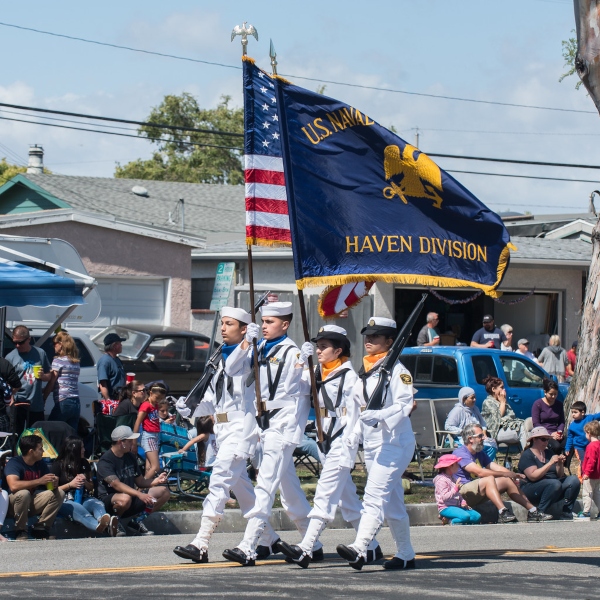
There are a few basic requirements you need to meet in addition to qualifying for the program based on your age:
- Must be a U.S. citizen or permanent legal resident
- Between the ages of 10-18
- Must be unmarried, alcohol-free, and drug-free
- You need to have good grades in school with at least a C-grade point average
- Physically and mentally able to participate in activities
- No criminal record
Applicants will also need to complete a medical examination comparable to the one you would take for high school sports.
Additionally, cadets must submit proof of immunization against common diseases.
Cadets are expected to be physically fit, have good grades in school, and no criminal record.
Related Article – Navy PRT Standards For Males and Females
How do I join the Sea Cadet program?
The Navy Sea Cadet Program has two different divisions you can join:
The Navy League Cadet Corps (NLCC) is open to all American youth between the ages of 10-13.
The one-week orientation is voluntarily yet encouraged in order to qualify for additional training through the NLCC.
It costs $90 per year to cover the annual enrollment fee.
The officer/midshipman/instructor also receives $40 per year from each cadet enrolled in the program.
Uniform costs range between $200 to $400, yet is a one time fee so long as the uniform remains in good shape.
The Navy Sea Cadet Corps (NSCC) is open to all American youth between the ages of 13-18.
Cadets are once again expected to be physically fit, have good grades in school, and no criminal record.
The two-week recruit training is mandatory for all Sea Cadets and will lead to further educational opportunities.
Membership costs $90 per year (annual enrollment fee) and $40 per year for the instructor.
Uniform costs range between $200 to $400, depending on upon several factors (i.e. the desire for full outfitting).
Training deposits vary based on the event yet typically run between $150 for a week, $200 for a 9-10 day event, and $300 for a two-week event.
The training deposit does cover room and board in addition to the instruction.
What are the benefits of joining?
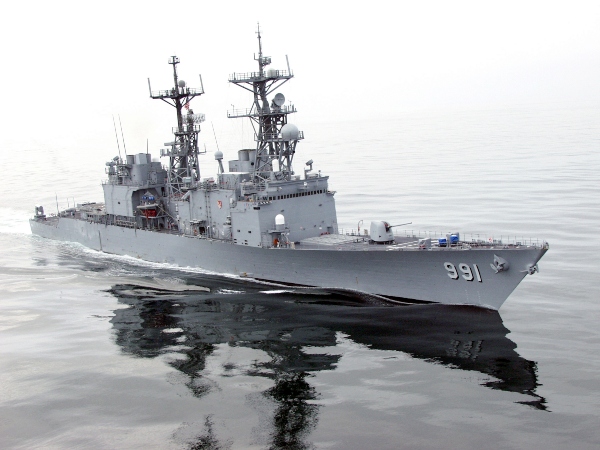
The United States Naval Sea Cadet Corps (USNSCC) is good for the country.
First and foremost it teaches the values of community service, therefore making your hometown a better place.
Secondly, Junior Cadets and Sea Cadets learn the virtues of good citizenship as well as develop strong moral principles.
The lessons learned are instrumental to the skills and principles you will need to survive in adulthood.
The Navy Sea Cadet Program also is good for the U.S. Navy and Coast Guard since it educates the youth on the oceanic traditions and values of professional seamanship.
Whether you choose to enlist in the U.S. Navy or Coast Guard once you turn 18 and graduate high school is up to you.
Regardless, the skills and lessons you learned in the Navy Sea Cadet Program will help inspire a better you!
Related Article: 5 Best Navy Combat Jobs
Conclusion
The Navy Sea Cadet Program is an exciting opportunity to learn more and become part of the naval operations and training associated with the Navy and Coast Guard.
There are two programs offered through the U.S. Naval Sea Cadet Corps: NLCC and NSCC.
The training programs to prepare you for life in the military (if you choose to go that route), or build skills and moral character to success in any career path.
Learn more by visiting the official website!
- Navy Promotion Timeline for Enlisted & Officers - June 19, 2024
- Navy SEAL Training (BUD/S) - June 19, 2024
- Navy Aircraft Carrier Flight Deck Shirt Colors Explained - June 19, 2024

